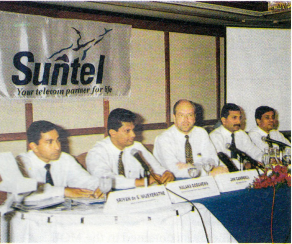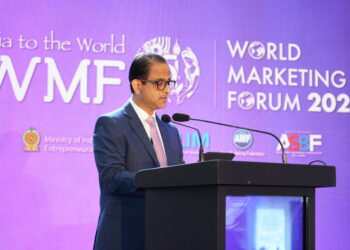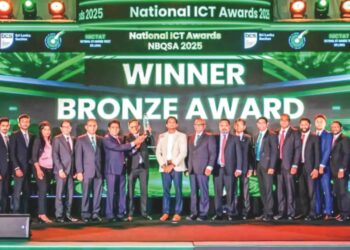
In response to the various allegations and comments made by Sri Lanka Telecom (SLT), Suntel gave their views to the public regarding the private fixed phone operators.
Suntel attributes their success to offering a good product and good customer service. They have been able to establish a customer base of 30,000 within a period of two years and they enjoy a market share of 8% of the total fixed phone market.
Suntel has invested over Rs 6.5 billion in developing one of the most sophisticated telecom networks in Sri Lanka. They are planning to further invest Rs 3 billion on network infrastructure during the coming year. The two private operators together have invested Rs 13 billion and by next year the investment would increase to Rs 20 billion, making it one of the largest investments ever made in the country.
On the allegation of private operators undercutting the SLT on tariffs, a Suntel media release said that they are free to set their own tariffs, and the only obligation that they have, is to inform the regulatory authority about their tariff structure.
After the heavy price increases intro- duced by SLT in April 1998, Suntel has found that its tariff structure is more economical to certain users than SLT’s. With regard to IDD calls, Suntel’s agreement does not allow them to use their own gateway to international calls. Therefore Suntel IDD tariffs are the same as SLT’s, even though there is no legal obligation.
However, due to advanced technology Suntel customers are charged only for actual talk time as they are billed in units of sec- onds. Due to SLT’s limitations in their billing system, their customers are charged in units of 6 second blocks and are likely to pay more for international calls.
According to the current interconnect ruling each operator is entitled to 100% of local and national calls. Telecom industry statistics show that more than 70% of the revenue of any operator comes from international traffic. However when it comes to international traffic the private operators are entitled to only 35% of total outgoing traffic generated by their own customers. 60% of their revenue goes to SLT. In addition SLT earns money from all incoming international calls to the networks of the private operators, of which nothing has been passed on to the private operators who have actually invested money in establishing their customer base.
Suntel opposes the allegation made by SLT, that Suntel is taking SLT’s corporate clients. Suntel points out that there are no restrictions stated in their license agreement in regard to the type of customers they are able to serve. They are willing to serve corporate clients or individuals who require telephone facilities.
Jan Campbell, managing director, Suntel stated that the concept and the basic principle of free competition and the government’s objective of providing a better service to Sri Lankan subscribers by developing the telecom industry as a whole, has not been understood or supported by SLT.
Suntel does not have access to the waiting list of Telecom customers and in a competitive environment does not expect such a thing. Suntel has developed their own marketing and sales strategies to achieve the 8% market share they enjoy at present. Suntel states that the two private fixed phone operators have developed their infrastructure with their own funds, without any financial assistance from the government and the allegations made by SLT regarding State assistance given to run the businesses is baseless.
According to Suntel statistics, traffic outgoing from Suntel to SLT is 58% whilst incoming traffic from SLT to Suntel is only 42%. It is not a 10:1 ratio as painted by some people who refer to SLT having 10 times more subscribers. Ideally this ratio should be 50/50.
The reasons for this imbalance are firstly, SLT have not informed their customers of the telephone numbers of Suntel customers whereas Suntel provides their directories as well as SLT’s to all 30,000 Suntel customers free of charge.
Secondly, SLT is overcharging their customers who make calls to customers of private operators by considering these calls as outstation calls, whereas Suntel differentiates between local and national calls strictly by geographical demarcation and not by operator. This means an SLT subscriber when calling a Suntel neighbor is charged for a national (outstation) call whereas the same Suntel subscriber when calling the same SLT number is charged only the local call rate.
Suntel believes the reason they have grown faster than SLT anticipated is due to the better services they offer customers.





